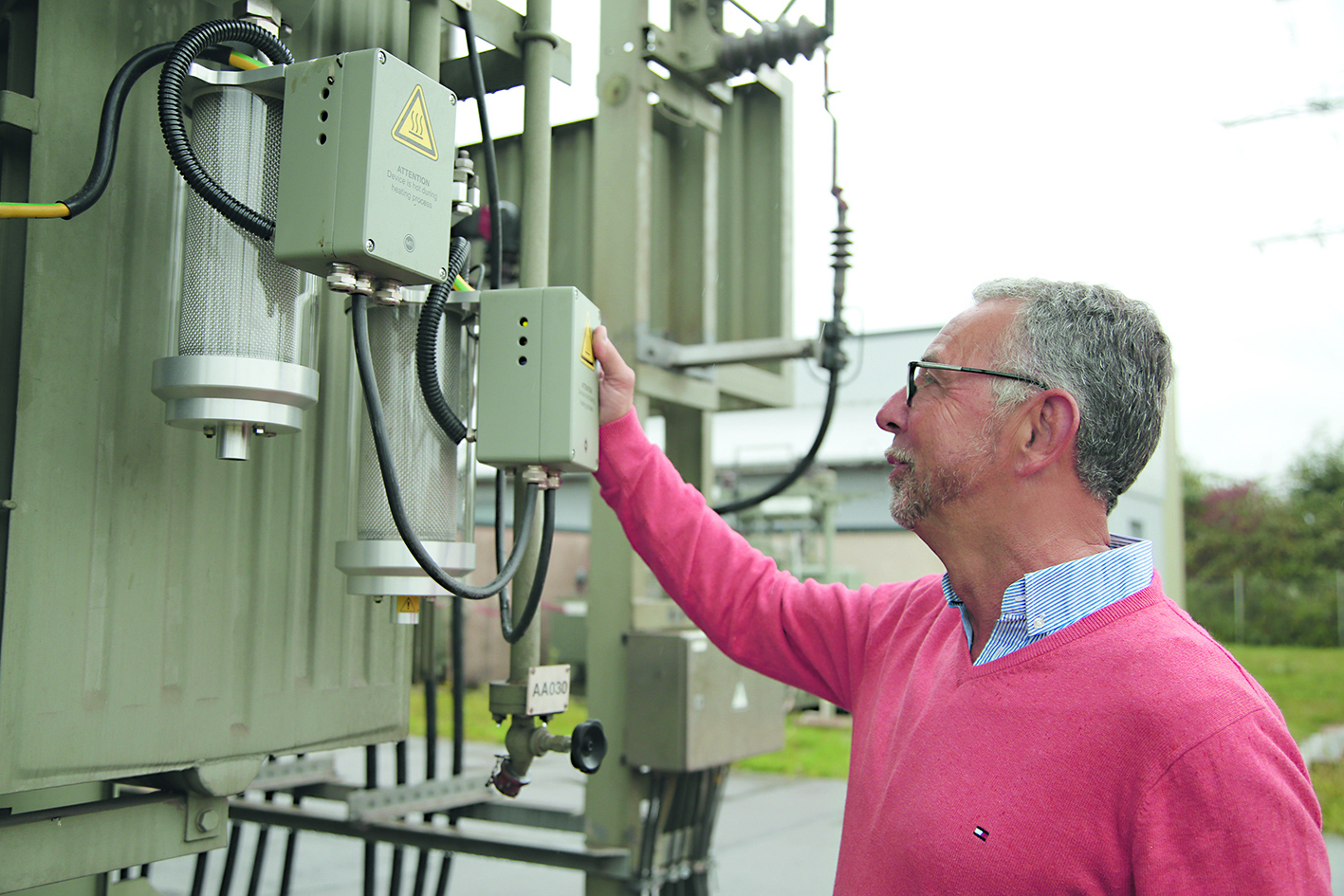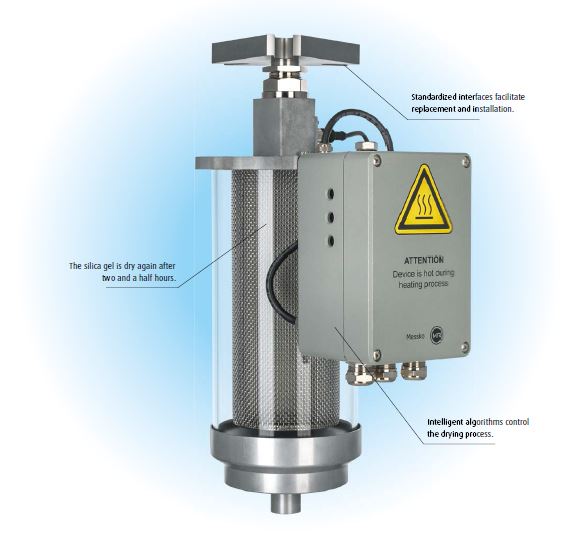-
Impulses
- Impulses overview
-
Transformer manufacturers
- South America's champions of the energy transition
- Traction Transformers – Future on the Rail
- Time of the giants: XXL transformers for more power
- "Reinhausen is ready to deliver!"
- Oversized de-energized tap-changers
- The most powerful transformers in the world for a 1,100 kV HVDC line in China
- "We are in a growth market with the VRDT"
- Digitalization turnaround: GANZ Intelligent Solutions relies on cooperation with MR
- "Transitioning to a solution provider presents a major opportunity for transformer manufacturers – and digitalization can help!"
-
Digitalization
- How AI can lend a hand
- myReinhausen: MR's central digital customer platform
- Why data centers (may) never fail
- Automation? (Cyber-) Secure!
- Globally unique: MESSKO® MTRAB® dehydrating breather communicates via cell phone app
- Remote Solutions: Professional help from a distance
- "Digitalization of the power grids will only work with comprehensive security measures"
- Why are you digitizing your transformers? Three questions for Rúnar Svavar Svavarsson.
- Six challenges, six solutions – Intelligent sensors for safe transformers
-
Energy transition
- The VRDT is the ideal solution to solve voltage problems in our distribution grids
- Making transformers more sustainable
- 940 tons of power regulation
- Sunny prospects: Municipal solar storage devices
- Four reasons why regulated distribution grids are the future
- "The energy transition is taking place in the distribution grids"
- Five theses on the future of power grids
- Storage at all network levels
- Test systems for the energy revolution
- Climate change, energy revolution and the future of power grids?
- A new design for utility poles
-
Wind and solar power
- The North Sea as Europe's green power plant
- Sahara electricity - safe for the island
- Are wind farms the new power plants?
- Direct current at all grid levels
- The MSCDN plant – the new "power plant generator" for stable grids
- Clean power grid with high-frequency filters
- Weatherproof cable testing for offshore wind parks
- VRDTs for Australia's distribution grids
- Lifetime optimization
- Power supply in industry
- Globalization
- Impulses overview
-
Transformer manufacturers
- South America's champions of the energy transition
- Traction Transformers – Future on the Rail
- Time of the giants: XXL transformers for more power
- "Reinhausen is ready to deliver!"
- Oversized de-energized tap-changers
- The most powerful transformers in the world for a 1,100 kV HVDC line in China
- "We are in a growth market with the VRDT"
- Digitalization turnaround: GANZ Intelligent Solutions relies on cooperation with MR
- "Transitioning to a solution provider presents a major opportunity for transformer manufacturers – and digitalization can help!"
-
Digitalization
- How AI can lend a hand
- myReinhausen: MR's central digital customer platform
- Why data centers (may) never fail
- Automation? (Cyber-) Secure!
- Globally unique: MESSKO® MTRAB® dehydrating breather communicates via cell phone app
- Remote Solutions: Professional help from a distance
- "Digitalization of the power grids will only work with comprehensive security measures"
- Why are you digitizing your transformers? Three questions for Rúnar Svavar Svavarsson.
- Six challenges, six solutions – Intelligent sensors for safe transformers
-
Energy transition
- The VRDT is the ideal solution to solve voltage problems in our distribution grids
- Making transformers more sustainable
- 940 tons of power regulation
- Sunny prospects: Municipal solar storage devices
- Four reasons why regulated distribution grids are the future
- "The energy transition is taking place in the distribution grids"
- Five theses on the future of power grids
- Storage at all network levels
- Test systems for the energy revolution
- Climate change, energy revolution and the future of power grids?
- A new design for utility poles
-
Wind and solar power
- The North Sea as Europe's green power plant
- Sahara electricity - safe for the island
- Are wind farms the new power plants?
- Direct current at all grid levels
- The MSCDN plant – the new "power plant generator" for stable grids
- Clean power grid with high-frequency filters
- Weatherproof cable testing for offshore wind parks
- VRDTs for Australia's distribution grids
-
Lifetime optimization
-
Power supply in industry
-
Globalization
Impulses - Portfolio
-
Career
Career
-
Company
Company
A transformer breathes out and in again a couple of times a year, depending on utilization. This is because an increase in load causes the insulating medium in the transformer to heat up and expand, pushing the air in the expansion tank out into the atmosphere. When the oil cools down again, it contracts and draws in the outside air. Dehydrating breathers are used to make sure that no moisture gets into the insulating medium when the transformer breathes in. Each transformer mostly has a minimum of two breathers: one for the oil circuit in the tap changer, the bigger ones for the transformer tank.
The substance that eliminates the moisture is called silica gel. Thanks to its water-absorbing properties, it is also used as a desiccant in other applications – inside the packaging of moisture-sensitive electronics, for example. As its ability to absorb water is limited, the silica gel in conventional dehydrating breathers has to be replaced and disposed of regularly – around two to three times a year on average. This frequency increases further as more renewable power is fed into the grid, as this means the transformer has to work under high load conditions more often. For grid operators, this is a task that takes up valuable time and ties up resources, and the resulting costs are not to be underestimated.
Karl-Heinz Jenal, who works as an operational supervisor at Saarland-based energy supplier VSE Verteilnetz GmbH and is responsible for maintaining the equipment, explains: “We have 56 high-voltage installations in our grid, each of which contains two transformers. Someone has to go out to each one on a regular basis to check whether the desiccant is still working properly. Over the course of a year, the time spent on mainten-ance really adds up. And then you have to factor in the metric ton of silica gel that we have to dispose of and replace.” At least, that’s how things used to be.
For VSE Verteilnetz GmbH, these tasks and the associated costs will soon be a thing of the past, as all of its transformers have been fitted with the maintenance-free MESSKO® MTRAB® dehydrating breather from Reinhausen subsidiary MESSKO. The breather still uses silica gel, but unlike the previous technology, the MESSKO® MTRAB® is able to regenerate itself. Sensors measure the moisture in the desiccant. An algorithm stored in the control system eval-uates these measurements and an electric heating system is activated automatically when the saturation point is reached. After around two and a half hours, the silica gel is dry again.
A Cost-Effective Solution
VSE Verteilnetz GmbH first used the MESSKO® MTRAB® in 2008, when it was adding a new transformer to the fleet. Jens Leinenbach, head of grid operations, recalls: “We were trying to work out how we could cut down on maintennance in the long term. That’s why we were keen to try out a new product and see whether it proved its worth in practice.” And the MESSKO® MTRAB® definitely passed the test. Eight years later, VSE Verteilnetz GmbH order-ed MESSKO dehydrating breathers for another 35 transformers and in 2019, the company decided to convert the entire fleet. “We wanted to bring all of our equipment up to the same level. We deliberately opted for a quality product – something that is not offered by many manufacturers on the market. The fact that we have been working with MESSKO and Reinhausen for many years also played a key role in the decision. Having a partner that we know and trust is important to us,” explains Leinenbach. As an additional advantage, the MESSKO® MTRAB® dehydrating breathers can be networked so that error messages are sent straight to the control room. And even if the electronics system fails at some point, the MESSKO® MTRAB® still functions as a convent-ional dehydrating breather. The company has yet to see a single error message: “Our experience has been entirely positive so far. We haven’t had to worry about a thing since the equipment was installed,” says Leinenbach.
Simple Installation
Jenal, who oversaw the conversion work, agrees. “The installation process is self-explanatory and very straightforward. Our own staff were able to carry out the work when they were going to a primary substation anyway for other reasons.” The new equipment has freed up resources that the operational supervisor and his team can now allocate elsewhere. When you work for an energy supplier, there are always plenty of other things to be getting on with.
| W.Sammet@messko.com |

We are here for you. Wherever you are.
Looking for the right contact partner?
Do you have a concern, but don't know whom you should contact? You will find that information in our contact overview. In the event of any technical disturbances, our 24/7 support is always at your disposal.
Welcome to myReinhausen
myReinhausen is MR's central, digital customer platform. On myReinhausen, customers can access customer-specific MR information as well as numerous free features related to the MR portfolio.
myReinhausenJoin Reinhausen family
Find your ideal job quickly!
Check our vacancies here. Apply today and contribute at the world market leader in energy technology keeping the energy supply stable in the future.


